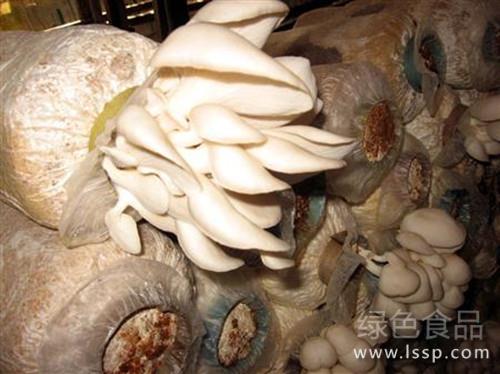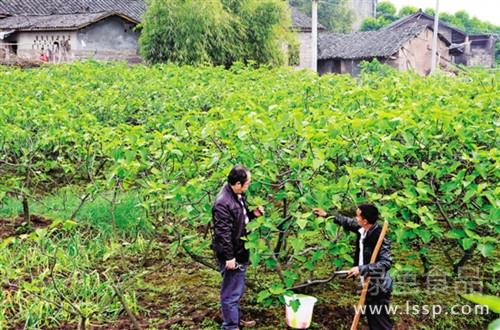Prevention and treatment of physiological Diseases of Edible Fungi
Edible fungi are sensitive to the environment, such as temperature, humidity, gas and other disharmony will hinder the growth and development of edible fungi, resulting in abnormal phenomena and even death. In this paper, the common physiological diseases and control measures of edible fungi are briefly introduced.

Physiological diseases of edible fungi
The main results are as follows: 1. The hyphae grow too long: after covering the soil, the villous hyphae of edible fungi continue to grow on the soil surface without forming mushroom buds. In serious cases, the hyphae are dense and clump, delay the emergence of mushrooms and reduce the yield. Pleurotus ostreatus and Lentinus edodes are more common. This is related to improper management, poor ventilation of mushroom room, high humidity of material surface and covering soil, or bacteria.
Control measures: after soil mulching and water transfer or mycelium healing period, strengthen the ventilation of mushroom house, increase air permeability, reduce carbon dioxide concentration and air humidity, reduce temperature, inhibit mycelium growth and promote fruiting body formation. If a bacterial mass has been formed on the surface, it can be cut with a knife and ventilated with water spray, and a fruiting body can still be formed.
2. Deformity of fruiting body. It occurs in Pleurotus ostreatus, Lentinus edodes, Ganoderma lucidum, etc. when it occurs, the fruiting body is irregular, the cover handle is large, askew, etc., the fruiting body is not differentiated, the fungus cap is not shaped, and only an undifferentiated tissue mass is formed in serious cases. It is mainly caused by mechanical damage, rough soil cover, too low mushroom position, squeeze, damage, insufficient light in mushroom room, high carbon dioxide concentration, etc., resulting in small cover, no slender stalk and other deformed mushrooms. Virus damage, drug damage, physical and chemical mutagens and other effects can also form deformed mushrooms.
Prevention and treatment measures: reduce mechanical trauma, strengthen ventilation and light transmission, prevent virus infection, correctly use chemicals, avoid drug damage, properly select mutagens and screen mutants with good genetic characters.
3. The phenomenon of dead mushroom. During the period of emergence, there was no harm to diseases and insect pests, but the fruiting bodies from young buds to fruiting bodies of different sizes yellowed, shrunk, stopped growing and died. Causes: too dense mushroom production, insufficient nutrition supply, mushroom death; high temperature, high humidity, heavy water spray, poor ventilation, lack of oxygen, mushroom suffocation, drug damage caused by spraying times, careless mushroom picking, bruising mushroom and so on. In view of the above reasons, symptomatic prevention and treatment.
4. Water rust spot. When the mushroom room is poorly ventilated and the humidity is high (> 95%), there is often stagnant water or rust in the covered soil, which will cause rust spots on the surface of the mushroom cover, which is similar to bacterial spot disease. However, the water rust spot is limited to the cover epidermis and does not go deep into the meat, such as strengthening ventilation, evaporating the water droplets on the surface of the mushroom body in time, and not covering the soil with rust, it can be prevented from happening.
5. The thin skin opens the umbrella early. In the prosperous production period of Pleurotus ostreatus, due to the dense mushroom production, high temperature (more than 18 ℃) and high carbon dioxide in the mushroom room, it is easy to produce fruiting bodies with slender stalk, thin cover and early umbrella opening, which should be prevented as soon as possible. Do not hang the mycelium too high, master the mushroom position well, prevent the mushroom from being too dense, do not spray tide water, do not produce tide mushroom. The phenomenon of opening umbrella early with thin skin can be reduced by properly lowering the temperature of mushroom room.
Therefore, in the cultivation of edible fungi, it is necessary to coordinate the factors such as temperature, humidity and gas, create good conditions for the growth of edible fungi, make them grow healthily and avoid the above physiological diseases.
- Prev

Matters needing attention in the Culture of Hydrangea
Acid soil hydrangea likes weakly acidic soil, so when raising hydrangea, in addition to watering it normally, you can also mix a few drops of rice vinegar into the water to adjust the pH of the soil, so as to make hydrangea grow better. Timely pruning should be carried out during the growing period of hydrangea.
- Next

Neglect of management quality and yield drop topdressing techniques for fig trees
Neglect of management quality and yield drop topdressing techniques for fig trees
Related
- Fuxing push coffee new agricultural production and marketing class: lack of small-scale processing plants
- Jujube rice field leisure farm deep ploughing Yilan for five years to create a space for organic food and play
- Nongyu Farm-A trial of organic papaya for brave women with advanced technology
- Four points for attention in the prevention and control of diseases and insect pests of edible fungi
- How to add nutrient solution to Edible Fungi
- Is there any good way to control edible fungus mites?
- Open Inoculation Technology of Edible Fungi
- Is there any clever way to use fertilizer for edible fungus in winter?
- What agents are used to kill the pathogens of edible fungi in the mushroom shed?
- Rapid drying of Edible Fungi

